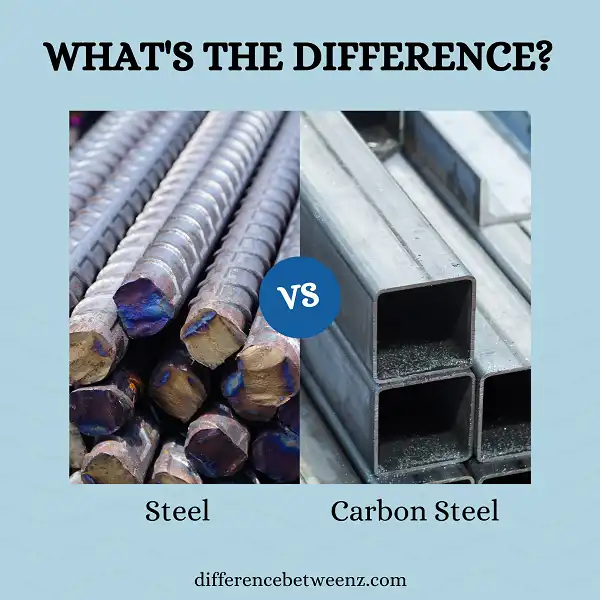Steel and carbon steel are both metals that are used in a variety of applications. However, there are some key differences between these two materials. In this blog post, we will take a closer look at the difference between steel and carbon steel, including their composition and uses. Stay tuned!
What is Steel?
Steel is an alloy of iron and carbon, and is one of the most important materials in the world. It has a wide range of applications, from construction to transportation, and is used in a variety of industries. Steel is made by combining iron and carbon in a furnace, and the different proportions of these two elements give steel its unique properties. For example, adding more carbon makes steel harder and stronger, while adding less carbon makes it more ductile and resistant to wear. Steel can be difficult to work with, but its strength and versatility make it an essential material in our modern world.
What is Carbon Steel?
Carbon steel is a type of steel that contains between 0.2% and 2.1% carbon by weight. Carbon steel is widely used in a variety of applications, ranging from knives and scissors to automobile parts and buildings.
Carbon steel is an important structural material due to its high strength-to-weight ratio and low cost. However, carbon steel is also susceptible to corrosion and is not as easy to weld as other types of steel. As a result, it is important to choose the right type of carbon steel for each application.
For example, lower-carbon steels are often used in knives and scissors due to their relative ease of sharpening, while higher-carbon steels are often used in construction due to their high strength. Carbon steel is a versatile material that can be used in a wide variety of applications.
Difference between Steel and Carbon Steel
Steel is an alloy of iron and carbon, but the term is generally used to refer to iron alloyed with a small amount of carbon. Carbon steel is steel in which the main interstitial alloying constituent is carbon.
The American Iron and Steel Institute (AISI) defines carbon steel as: “Steel is considered to be carbon steel when no minimum content is specified or required for chromium, cobalt, columbium [niobium], molybdenum, nickel, titanium, tungsten, vanadium or zirconium, or any other element to be added to obtain a desired alloying effect; when the specified minimum for copper does not exceed 0.40 percent; or when the maximum content specified for any of the following elements does not exceed the percentages noted: manganese 1.65, silicon 0.60, copper 0.60.”
Steel comes in many different grades and types, with each grade designed for specific applications. For example, high-carbon steels are extremely hard and are used for cutting tools and rendezvous coils in spacecraft. Low-carbon steels are soft and ductile and are used for things like pipes and car bodies.
Conclusion
Steel is an alloy of iron and carbon that contains up to 2% carbon. Carbon steel, on the other hand, has a higher concentration of carbon (between 0.6% and 2%). This makes carbon steel harder and more brittle than regular steel. It also means that it can be tempered at a higher temperature without losing its strength. As you can see, both steels have their own unique properties that make them perfect for different applications.


